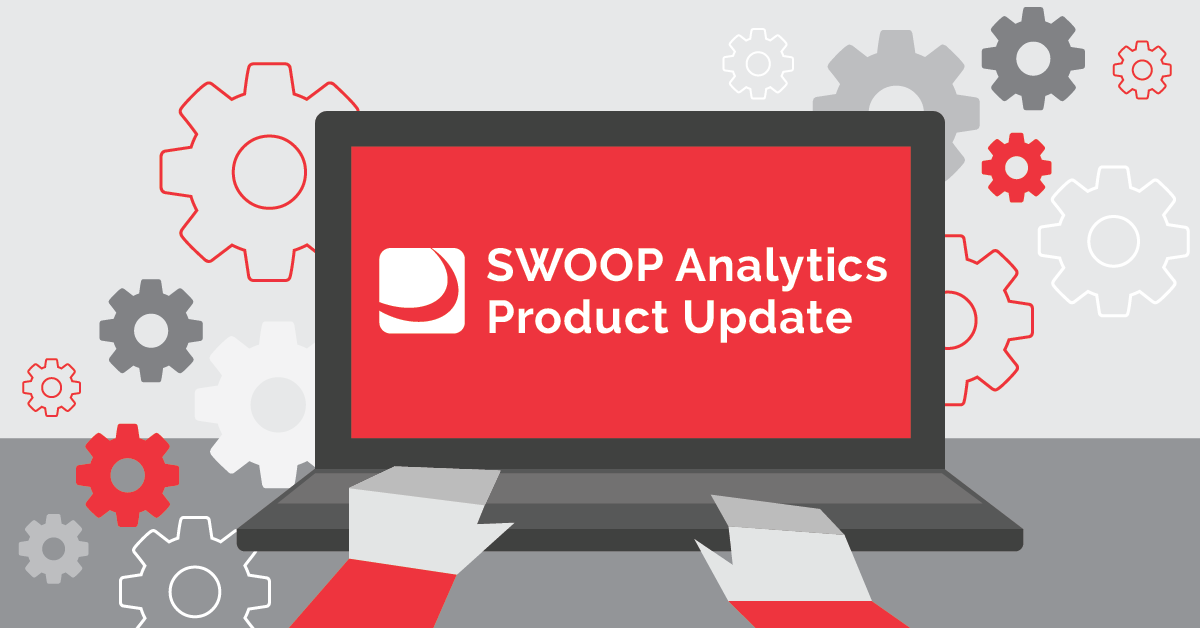
How to run a
successful intranet
Insights from SWOOP Analytics®’ 2023
SharePoint Intranet Benchmarking
If you’re involved in running, or writing for, an intranet but have little idea about what "good" looks like - we've got you covered! We've analysed the real-life data from more than 36,000 SharePoint intranet pages across seven organisations.
In this benchmarking report we'll show you:
When it's the best time to post on the intranet
How much time employees spend visiting and reading the intranet
How long an intranet news article should be
What devices employees use to access the intranet
How to capitalise on the small window of time employees spend on the intranet
SWOOP Analytics' "How to run a successful intranet" benchmarking report is free to download.

We’ve analysed more than 36,000 intranet pages accessed by almost 100,000 employees across seven organisations worldwide to produce the first-ever SharePoint intranet benchmarking report that shows exactly how people are using and accessing company intranets.
Our benchmarking data will give you real-life insights into when people are reading the intranet,
what they’re reading on the intranet, how they’re accessing the intranet and
how you can best shape your content to get maximum engagement.
2023 Key Insights
When is the prime time employees read the news on the intranet?
Optimal time is 7am-9am or 11am-1pm on a weekday, with Thursday being the best day.
SWOOP Analytics’ benchmarking of SharePoint intranets found employees tend to read news mostly at the beginning of the day (7am–9am) and again at the midday break (11am-1pm). However, news is being consumed any time during the normal working hours of 8am–6pm.
News is read liberally on each weekday. Thursday is marginally a better day for news reading and Friday the least. However, unless a news item is time sensitive, it is best to post earlier in the week to avoid the disrupted attention of a weekend.
How much time do employees spend visiting and reading the intranet?
17 minutes a day, on average.
SWOOP Analytics’ benchmarking of SharePoint intranets found employees spend, on average, 17 minutes visiting the intranet. Visiting time ranged from a low of 11 minutes to a high of 22 minutes per work day, per employee. The average time spent reading news pages ranged from 4-16 minutes per day.
News page editors can expect to have an average 10 minutes per workday of an employee’s attention. For maximum impact, think about what key messages you would like to prioritize for the small window of attention available.
How long should an intranet news
article be?
500 words or more.
SWOOP Analytics’ benchmarking of SharePoint intranets found the top ranking 20% of news articles averaged around 500 words; which appears to be the sweet spot. Perhaps surprisingly, there isn’t a big drop off in readership if an article stretches to 1,500 words but news articles with 300 words or less had the least engagement.
What devices do employees use to access the intranet?
Their desktop.
SWOOP Analytics’ benchmarking of SharePoint intranets found 99.76% of employees access the intranet via their desktop. Only 0.22% of employees access the intranet via their phone and 0.02% by a tablet.
How long do intranet news articles sustain reader interest?
About a week.
SWOOP Analytics’ benchmarking of SharePoint intranets found the natural life of a news article lasts about a week. Depending on the topic and context of each news article, the decay rates ranged from three days up to a few weeks.
The quality of intranet pages correlates with visitors coming to the page. Higher quality = more visitors. Both content and news pages with bespoke content attract four times as many visits as pages that bring already existing webparts/content together. “Content” pages, as opposed to “news” pages, get three times more visits.
In SWOOP Analytics' 2023 SharePoint intranet benchmarking we analysed:
36,400+ intranet pages
14,271 intranet “news” pages
Accessed by almost 100,000 employees
Seven organisations
Each page was analysed for:
Number of Visitors
Visit Time
Engagement
Experience
Quality
Page Creator/Editors
Date/Time created/modified
Page ID
User ID
Date/Time Viewed
Page length, words, paragraphs
Device used to access
















